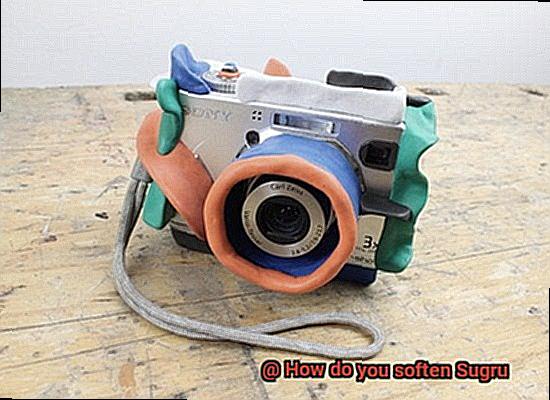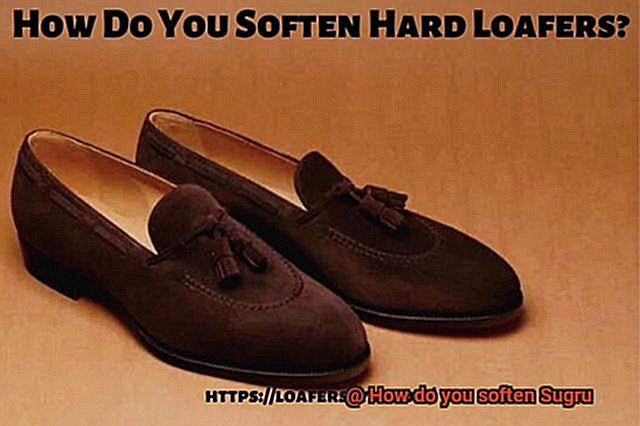Picture this: a material that bends to your will, molds like a dream, and holds its ground against the test of time. That’s right, we’re talking about the legendary “adult Play-Doh” that is Sugru.
Whether you’re a wizard in need of a custom grip for your magical tools or a sorcerer looking to mend your trusty pair of shoes, Sugru is here to make your crafting dreams come true. But what if you find yourself yearning for a touch more flexibility in your creation? Fear not, my friends. We hold the key to unlocking Sugru’s full potential.
So, gather ’round as we embark on this mystical journey together. Prepare yourselves for secrets revealed and spells cast as we delve into the art of softening Sugru. Get ready to wield your wand and unleash the magic within.
What is Sugru?
Contents
In the world of adhesives, Sugru stands out as a game-changer. This innovative moldable glue has taken the DIY and crafting communities by storm with its ability to repair, enhance, and create with ease. Let’s dive into the world of Sugru and discover why it’s a must-have tool for anyone seeking versatile, durable, and creative adhesive solutions.
Unleashing the Power of Sugru:
Imagine a glue that not only sticks to almost any surface but can also be molded and shaped to fit your specific needs. That’s exactly what Sugru brings to the table. Invented by Irish entrepreneur Jane ní Dhulchaointigh, this self-setting rubber revolutionizes the way we think about adhesives.
Moldability and Flexibility:
Sugru’s secret lies in its patented silicone-based formula. This unique blend gives it a playdough-like consistency, allowing you to shape and mold it with your hands. It’s incredibly user-friendly. Once set, Sugru retains its flexibility and rubbery texture, making it perfect for repairing items that require movement or flexibility.
Versatile Bonding:
Whether you need to repair wood, ceramics, glass, metal, plastics, or fabrics, Sugru has got you covered. Its ability to adhere to a wide range of materials makes it a go-to solution for various repair projects around the home or office. Say goodbye to multiple adhesives cluttering your toolbox.
Exceptional Strength and Durability:
Don’t be fooled by its moldable nature; Sugru doesn’t compromise on strength and durability. Once applied, Sugru bonds to surfaces within 30 minutes and fully cures within 24 hours. During this time, a chemical reaction called cross-linking occurs, creating a solid structure that offers exceptional strength and long-lasting durability.
Waterproof and Heat-Resistant:
Sugru’s resistance to water, heat, and UV radiation sets it apart from other adhesives. Once cured, it becomes waterproof, ensuring its efficacy even in wet environments. Additionally, Sugru can withstand temperatures ranging from -50°C to 180°C (-58°F to 356°F), making it suitable for various applications, both indoors and outdoors.
Endless Possibilities:
Sugru has gained a loyal following among DIY enthusiasts, crafters, and individuals looking for reliable fixes for everyday objects. Its versatility and ease of use make it a perfect companion for a wide range of projects. Repair frayed cables, customize kitchen utensils, or create unique crafts—the possibilities are endless.
How to Soften Sugru with Heat
Sugru is a remarkable product that can transform from a moldable glue into a flexible silicone rubber-like material. But what if you need to reshape or reuse it? Don’t worry. We have the secret to softening Sugru with heat, giving you the power to create and recreate to your heart’s content.
Gather Your Materials and Get Ready
Before you embark on your Sugru softening adventure, make sure you have all the necessary tools at hand. Grab a hairdryer, hot water, or even an oven if you’re feeling fancy. Also, prepare a heat-resistant surface to place the Sugru on during the process.
Let’s Start with the Hairdryer Method
The hairdryer method is the simplest and most convenient way to soften Sugru. Begin by pointing the hairdryer’s hot air onto the hardened Sugru surface. Move the hairdryer in circular motions, ensuring every inch gets its fair share of heat. Take it slow and steady to avoid overheating. You’ll know it’s ready when the Sugru becomes soft and pliable under your touch.
Hot Water Bath for the Win

If you don’t have a hairdryer on hand, fear not. The hot water method will come to your rescue. Fill a container with hot water that is not boiling (we don’t want any accidents.). Submerge the hardened Sugru in the water and let it soak for a few minutes. The warmth will work its magic, making the Sugru soft and ready for reshaping or reuse.
When in Doubt, Use the Oven
For larger pieces of hardened Sugru or when you need to soften multiple pieces at once, the oven method is your go-to. Preheat your oven to a low temperature, around 150°F (65°C). Place the hardened Sugru on a baking tray lined with parchment paper and pop it in the oven for about 10 minutes.
Keep a watchful eye on it to prevent overheating or burning. Once soft and pliable, carefully remove the Sugru from the oven and let it cool slightly before handling.
Caution and Considerations
While heat is a powerful tool in softening Sugru, it’s essential to exercise caution. Avoid using excessive heat or prolonged exposure, as this can cause the Sugru to melt or lose its adhesive properties. Always monitor the process closely and be gentle during reshaping or reuse.
How to Soften Sugru with Lubricants
In this comprehensive guide, we will explore the exciting world of softening Sugru using lubricants. From the power of petroleum jelly to the supercharging effects of silicone-based lubricants, we’ve got all the tips and tricks you need. So dive in and discover how to make Sugru more pliable and easier to work with.
The Power of Petroleum Jelly:
Petroleum jelly, a versatile lubricant, can work wonders on hardened Sugru. Start by applying a small amount onto your hands and gently massaging it into the Sugru. As the friction warms up the jelly, it breaks down the polymer structure, making Sugru softer and more malleable. Remember, a little goes a long way. Start with a small amount and gradually add more until you achieve the desired consistency.
Supercharge with Silicone-Based Lubricants:
Silicone-based lubricants are another fantastic option for softening Sugru. Known for their heat resistance and ability to reduce friction, these lubricants are perfect for the job. Apply a small amount onto your hands and thoroughly rub it into the Sugru.
The heat generated from the friction breaks down the hardened material, making it easier to shape and mold. For even distribution, consider using a spray form of silicone-based lubricant.
Exploring Alternatives: Baby Oil and Cooking Oil:
No petroleum jelly or silicone-based lubricants on hand? No problem. You can still soften Sugru using other lubricants like baby oil or cooking oil. Apply a small amount of your chosen oil onto your hands and work it into the Sugru.
Just like petroleum jelly and silicone-based lubricants, these oils reduce friction between the Sugru molecules, making it flexible and pliable. Remember to start with a small amount and gradually add more if needed.
Mastering the Process:
When using lubricants to soften Sugru, take a gradual approach. Start with a small amount of lubricant and add more as needed. Take your time to work the lubricant into the Sugru, allowing it to absorb before adding more. This way, you achieve the perfect softness without making the Sugru too sticky or gooey.
How to Soften Sugru with Solvents
Don’t fret. This comprehensive guide will walk you through the process of softening Sugru using solvents such as isopropyl alcohol and acetone. With easy-to-follow steps and safety precautions, you’ll be able to make Sugru pliable and ready for reshaping in no time.
Softening Sugru with Heat:
Heat is a powerful ally when it comes to softening Sugru. You have two fantastic options: hot water and a trusty hairdryer. Fill a bowl with hot (but not boiling) water and submerge the hardened Sugru for a few minutes. As the heat permeates the material, it will soften, becoming flexible and ready for manipulation.
If you prefer more precise control, grab your hairdryer. Hold it about 6 inches away from the Sugru and move it back and forth. Feel the warmth seeping into the material, transforming it into a pliable state that can be effortlessly shaped to your liking.
Lubricants – Your Allies in Softening Sugru:
Petroleum jelly is your go-to lubricant when it comes to softening Sugru. Apply a small amount onto the hardened Sugru and allow it to sit for a while. The petroleum jelly will penetrate the material, making it softer and more malleable. It’s like giving Sugru a rejuvenating spa treatment.
Solvents – Breaking Down Sugru’s Toughness:
Rubbing alcohol and acetone are two solvents that work wonders in softening Sugru. These potent substances can break down the structure of the hardened material, making it easier to manipulate.
To soften Sugru with rubbing alcohol, apply a small amount onto the hardened Sugru and let it soak for a few minutes. As the alcohol works its magic, the Sugru will gradually become softer and more pliable.
Acetone, a powerful solvent found in nail polish removers and paint thinners, is another option for softening Sugru. Place the Sugru in a container and pour enough acetone to cover it completely. Let it soak for a period of time, starting with a shorter duration and increasing if necessary. The acetone will dissolve the Sugru, transforming it into a malleable state.
Safety First – Test Before You Go Big:
Before using any method mentioned, it’s essential to conduct a small test on an inconspicuous area. This precautionary step ensures that the solvent or heat won’t damage the Sugru or the surface to which it is applied. Safety should always be your priority as a DIY enthusiast.
Benefits of Using Heat to Soften Sugru
Unlocking the full potential of Sugru is now possible with a secret weapon – heat. In this article, we will explore the myriad benefits of using heat to soften Sugru. This versatile material becomes pliable and easy to work with, making it a dream come true for DIY enthusiasts and professionals alike. From enhanced flexibility and expedited curing to improved adhesion and workability, heat is the key to taking your projects to new heights.
Flexibility and Moldability:
Applying heat to Sugru offers a remarkable advantage – increased flexibility and moldability. Once stiff and unyielding, Sugru transforms into a pliable masterpiece with the help of heat. Say goodbye to struggling with awkward shapes and hello to effortless molding. Whether you’re working on intricate designs or simple repairs, softened Sugru ensures a perfect fit every time.
Expedited Curing Process:
Time is of the essence, especially when working on projects with tight deadlines. With heat, you can expedite the curing process of Sugru, reducing waiting times and allowing you to move forward faster. This benefit is particularly valuable for time-sensitive repairs or urgent DIY undertakings. Heat gives you more time to focus on your project’s progress.
Enhanced Adhesion:
Strong bonds are crucial for successful repairs and construction projects. Heating Sugru softens it and increases its tackiness, resulting in improved adhesion capabilities. Your repairs will be more robust and longer-lasting. From fixing broken household items to creating secure attachments, softened Sugru ensures a reliable bond that stands the test of time.
Improved Workability:
Achieving a seamless finish is essential for any project. Heat makes Sugru softer and more malleable, enabling easier spreading and application onto surfaces. This results in a smoother and more even finish, reducing the risk of unsightly air bubbles or uneven patches. With softened Sugru, your projects will have a professional touch that is sure to impress.
Easy Removal and Repositioning:
Mistakes happen, but with heat, they no longer spell disaster. By applying heat to already-cured Sugru, you can soften it and make it pliable again. This makes removal or repositioning effortless, without damaging the underlying surface. So go ahead, make those adjustments and corrections with ease. Heat gives you the freedom to refine your work until it’s perfect.
Enhanced Performance in Extreme Temperatures:
Sugru’s performance can be greatly influenced by temperature extremes. By heating the material before application, you can improve its resistance to high temperatures, making it perfect for applications where heat resistance is required. Additionally, heat prevents the material from becoming too stiff or brittle in cold weather conditions. No matter the environment, your Sugru creations will remain reliable and durable.
Benefits of Using Lubricants and Solvents to Soften Sugru
Sugru, the versatile moldable glue, is a DIY enthusiast’s dream. But did you know that there are ways to take your Sugru experience to the next level? By using lubricants and solvents, you can soften Sugru, making it even more pliable and easy to work with. Let’s explore the benefits of using these materials to transform your Sugru projects.
- Easier and more efficient softening: Lubricants, such as mineral oil or silicone oil, make the process of softening Sugru a breeze. They penetrate the material and break down its chemical bonds, making it softer and more pliable. No more struggling with stiff Sugru.
- Damage prevention: When softening Sugru, excessive force or pressure can potentially damage the material or affect its adhesive properties. Using a lubricant eliminates this risk. You can shape and mold Sugru without worrying about compromising its integrity.
- Enhanced shaping capabilities: Solvents like acetone or isopropyl alcohol dissolve Sugru, making it even more malleable. Soak or immerse Sugru in a solvent, and watch its structure break down. This allows for easier shaping and molding into desired forms.
- Easy clean-up: Solvents not only soften Sugru but also help remove any residual adhesive from surfaces where it has been applied. No more sticky mess. With the help of solvents, any excess Sugru can be easily wiped away.
- Safety first: Remember to prioritize safety when using lubricants or solvents with Sugru. Ensure proper ventilation when working with solvents, and protect your hands by wearing gloves to prevent skin contact. Also, follow the manufacturer’s instructions for the lubricant or solvent being used.

Precautions When Using Heat, Lubricants, and Solvents
When it comes to using heat, lubricants, and solvents, we must always prioritize safety. These materials can be dangerous if not handled with caution. So, let’s dive into some necessary precautions to ensure a hazard-free experience.
Firstly, when applying heat to soften Sugru, it’s essential to use the right tools. Say no to open flames or direct heat sources – they can literally burn your dreams of a perfect Sugru creation. Instead, opt for a reliable sidekick like a heat gun or a hairdryer set on low heat. These trustworthy companions will soften your Sugru without any damage or harmful fumes.
Now, let’s gear up for safety. Put on your gloves to protect those precious hands from burns and goggles to shield your eyes from unexpected splatters. Safety should always be fashionable. And don’t forget to work in a well-ventilated area. We want you breathing fresh air, not any funky fumes.
When it comes to lubricants and solvents, compatibility is key. Not all lubricants and solvents are Sugru-friendly, so be sure to check those labels. Look for products that are safe for rubber or silicone materials – the building blocks of Sugru awesomeness.
Cleanliness is next to godliness in the world of Sugru. Before applying any lubricant or solvent, make sure the surface is squeaky clean. A mild soap and water solution or rubbing alcohol will do the trick. Say goodbye to dirt and debris, and hello to better adhesion and penetration.
Start small, then go big. When applying lubricant or solvent, start with a small amount and increase if necessary. We don’t want your Sugru turning into a gooey mess. Oh, and remember, avoid applying these substances to electronics or sensitive components. We want your gadgets to stay intact.
Last but not least, always work in a well-ventilated area when dealing with lubricants and solvents. Fumes are not your friends, so make sure there’s enough airflow. Crack open a window or turn on a fan – let those fumes fly away.
G-NVfe58htU” >
Also Read: Sugru Basics and Tips : 5 Steps
Conclusion
Softening Sugru is a simple process that can be done with just a few steps.
To begin, gather the necessary materials: a container of Sugru and a microwave-safe bowl. Next, break off the desired amount of Sugru from the container and place it in the bowl.
Now, it’s time to heat things up. Pop the bowl into the microwave for about 10 seconds on high power.
Be sure to keep an eye on it as you don’t want it to become too hot or start melting. Once heated, take out the bowl and use a spoon or your hands to knead the softened Sugru until it reaches a pliable consistency.
And voila. You now have perfectly softened Sugru ready for all your DIY projects.
With these simple steps, you’ll have no trouble getting your Sugru ready for any creative endeavor that comes your way.






